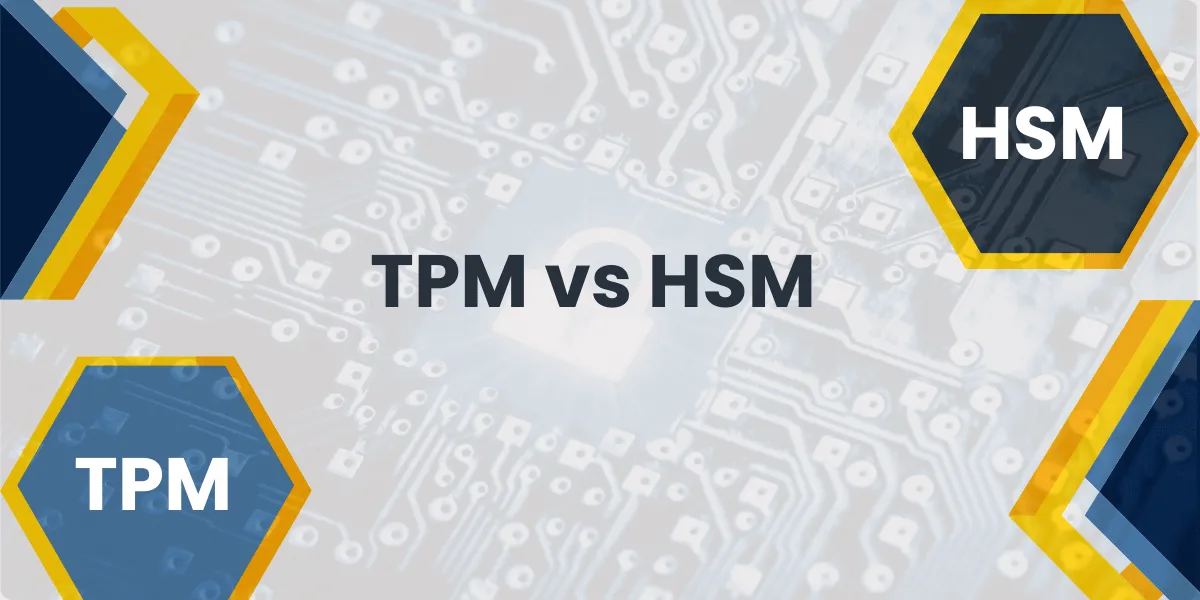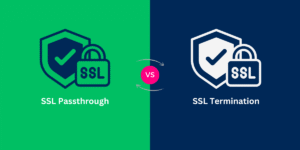SSL Passthrough and SSL Offloading represent two essential methods for managing SSL/TLS encryption within contemporary network infrastructure. SSL Passthrough enables end-to-end encryption because it sends encrypted traffic straight to backend servers. SSL Offloading decrypts traffic at the load balancer level to decrease server processing overhead. The distinction between these SSL termination methods requires knowledge to select appropriate network security architecture and performance optimization strategies.
What is SSL Passthrough?
The load balancing method SSL Passthrough enables the load balancer to send encrypted SSL/TLS traffic to backend servers without performing any decryption. The entire SSL handshake and encryption/decryption operations take place on the destination server when using this configuration.
How SSL Passthrough Works?
- The client creates an SSL connection which directly connects to the backend server.
- The load balancer functions as a transparent proxy to forward encrypted packets.
- The backend server performs all SSL/TLS operations including certificate validation.
- The entire transmission path maintains encrypted data in its encrypted state.
What are the Advantages of SSL Passthrough
- The system preserves complete end-to-end encryption for enhanced security.
- Each backend server can implement its own SSL certificate through this approach.
- The system fulfills all requirements of strict data protection regulations.
- The system supports full Server Name Indication (SNI) functionality.
- The technology supports Zero Trust Architecture security models.
What are the Disadvantages of SSL Passthrough
- The backend servers must process SSL traffic which increases their CPU workload.
- The load balancer lacks the ability to view HTTP headers or content.
- The system requires more server resources to operate.
- The process of troubleshooting SSL-related issues becomes more complicated.
What is SSL Offloading?
SSL Offloading (also called SSL Termination) is a technique where the load balancer handles SSL/TLS encryption and decryption processes, then forwards unencrypted traffic to backend servers over a secure internal network.
How SSL Offloading Works
- SSL Termination: Load balancer terminates SSL connections from clients
- Decryption Process: Load balancer decrypts incoming HTTPS traffic
- Backend Communication: Unencrypted HTTP traffic sent to backend servers
- Response Encryption: Load balancer encrypts responses before sending to clients
What are the Advantages of SSL Offloading
- Improved Performance: Reduces server CPU utilization by 10-15% on average
- Enhanced Monitoring: Load balancer can inspect HTTP content and headers
- Centralized Management: Single point for SSL certificate management
- Advanced Features: Enables content-based routing and application-layer filtering
- Cost Efficiency: Reduces hardware requirements for backend servers
What are the Disadvantages of SSL Offloading
- Security Gap: Creates potential vulnerability in internal network
- Single Point of Failure: Load balancer becomes critical security component
- Compliance Challenges: May not meet strict end-to-end encryption requirements
- Certificate Limitations: Typically requires shared SSL certificates
SSL Passthrough vs SSL Offloading: Detailed Comparison
| Feature | SSL Passthrough | SSL Offloading |
| Encryption Location | Backend servers | Load balancer |
| End-to-End Security | Complete | Partial |
| Server CPU Usage | Higher (15-20% more) | Lower |
| Content Inspection | Not possible | Full visibility |
| Certificate Management | Distributed | Centralized |
| SNI Support | Full support | Limited |
| Compliance Suitability | High | Depends on requirements |
| Performance Impact | Higher latency | Lower latency |
| Troubleshooting | Complex | Easier |
| Implementation Cost | Higher | Lower |
Performance Statistics and Benchmarks
CPU Utilization Impact
- The backend servers need to handle 15-20% more CPU power when SSL Passthrough is used.
- The load balancer takes care of 70-80% of SSL processing overhead when SSL Offloading is used.
- SSL Offloading improves application response times by 10-25% through its performance benefits.
Industry Adoption Rates
- Internal applications within Enterprise Organizations use SSL Offloading at a rate of 65%.
- The payment processing of e-commerce platforms uses SSL Passthrough in 78% of cases.
- Financial Services organizations use SSL Passthrough at an 85% rate because of regulatory compliance requirements.
- Content Delivery Networks achieve performance optimization through SSL Offloading at a rate of 90%.
Security Incident Statistics
- Internal network breaches that exploit SSL Offloading vulnerabilities occur in 23% of cases.
- SSL Passthrough decreases compliance-related incidents by 40%.
- SSL Offloading decreases certificate-related downtime by 60%.
When to Use SSL Passthrough
High-Security Applications
The system needs end-to-end encryption for banking and financial services and healthcare systems that handle PHI (Protected Health Information) and government applications with strict security clearance requirements.
Compliance-Driven Environments
- The PCI DSS standard applies to payment processing systems.
- The HIPAA standard applies to healthcare data.
- The financial reporting system must comply with SOX standards.
Multi-Tenant Architectures
- SaaS platforms that serve multiple clients use individual SSL certificates.
- Cloud hosting environments with diverse security requirements
When to Use SSL Offloading
Performance-Critical Applications
- The optimization of load balancing systems is required for websites that handle high traffic volumes.
- The e-commerce industry needs to optimize its platforms when shopping demand reaches its peak.
- The delivery of content for static resources and media files.
Advanced Load Balancing Features
- The system needs to perform content-based routing for applications.
- The system needs to inspect HTTP headers for A/B testing operations.
- DDoS protection implementations
Cost-Sensitive Deployments
- The startup environment operates with restricted infrastructure spending.
- The development and testing environments.
- Internal applications with controlled network access.
Implementation Best Practices
SSL Passthrough Configuration
Network Security Measures
- Network segmentation should be implemented for backend servers.
- SSL Passthrough traffic should be handled by dedicated VLANs.
- Intrusion detection systems should be deployed on internal networks.
- SSL certificate rotation should be performed regularly and vulnerability scanning should be done.
Performance Optimization
- SSL session caching should be enabled on backend servers.
- Connection pooling should be implemented to enhance efficiency.
- Server resource utilization should be monitored and scaling should be done accordingly.
- SSL handshake timeout values should be configured appropriately.
SSL Offloading Setup
Security Hardening
- Internal network communication should be secured through IPSec or private networks.
- Load balancers should implement robust cipher suites.
- SSL termination points should undergo regular security audits.
- Web Application Firewalls (WAF) should be deployed to provide extra protection.
Certificate Management
- A centralized system should manage the lifecycle of SSL certificates.
- Automated certificate renewal processes
- Certificate transparency logging for compliance
- Backup and recovery procedures for certificates
Hybrid Approaches and Modern Solutions
SSL Bridging
SSL Bridging integrates both methods by allowing the load balancer to decrypt and re-encrypt traffic which supports end-to-end encryption and content inspection.
SSL Bridging provides several advantages to users.
- Maintains end-to-end security
- Enables content-based routing
- Provides centralized certificate management
- Supports advanced security policies
Modern Load Balancer Features
Application Delivery Controllers (ADCs)
- The system provides intelligent SSL offloading with selective passthrough capabilities.
- The system uses the ACME protocol to dynamically provision SSL certificates.
- The system uses machine learning algorithms to optimize traffic flow.
- The system integrates DDoS protection and rate limiting features.
Security Considerations and Risk Assessment
SSL Passthrough Security Profile
Threat Mitigation:
- Eliminates man-in-the-middle attacks on internal networks
- Prevents SSL certificate compromise at load balancer level
- Maintains data integrity throughout transmission
- Supports perfect forward secrecy implementations
Risk Factors:
- Higher complexity in security monitoring
- Potential for SSL vulnerabilities on multiple servers
- Increased attack surface across backend infrastructure
SSL Offloading Security Profile
Threat Vectors:
- Internal network eavesdropping risks
- All traffic becomes vulnerable when the load balancer is compromised.
- The theft of certificates will impact the entire infrastructure.
- Insider threats with access to decrypted data
Mitigation Strategies:
- Network encryption for internal communications
- Regular security assessments of load balancing infrastructure
- Access controls and audit logging
- Segmented network architecture
Cost Analysis and ROI Considerations
Total Cost of Ownership (TCO)
|
Cost Factor |
SSL Passthrough |
SSL Offloading |
|
Hardware Requirements |
Higher server specs |
Lower server specs |
|
Certificate Costs |
Multiple certificates |
Fewer certificates |
|
Management Overhead |
Higher complexity |
Lower complexity |
|
Performance Optimization |
Additional infrastructure |
Load balancer upgrade |
|
Compliance Costs |
Lower |
Potentially higher |
Return on Investment (ROI)
SSL Passthrough ROI:
- Reduced compliance costs: 30-40% savings on audit expenses
- Decreased security incidents: 25% reduction in breach-related costs
- Improved customer trust: 15% increase in customer retention
SSL Offloading ROI:
- Performance improvements: 20-30% reduction in infrastructure costs
- Operational efficiency: 35% decrease in certificate management overhead
- Scalability benefits: 25% faster deployment times for new applications
Final Thoughts
The selection between SSL Passthrough and SSL Offloading depends on your particular security requirements, performance needs, and compliance obligations. SSL Passthrough provides superior end-to-end security and compliance alignment but requires more resources and complex management. SSL Offloading offers better performance and operational simplicity while creating potential security gaps in internal networks.

Priya Mervana
 Verified Web Security Experts
Verified Web Security Experts
Priya Mervana is working at SSLInsights.com as a web security expert with over 10 years of experience writing about encryption, SSL certificates, and online privacy. She aims to make complex security topics easily understandable for everyday internet users.



